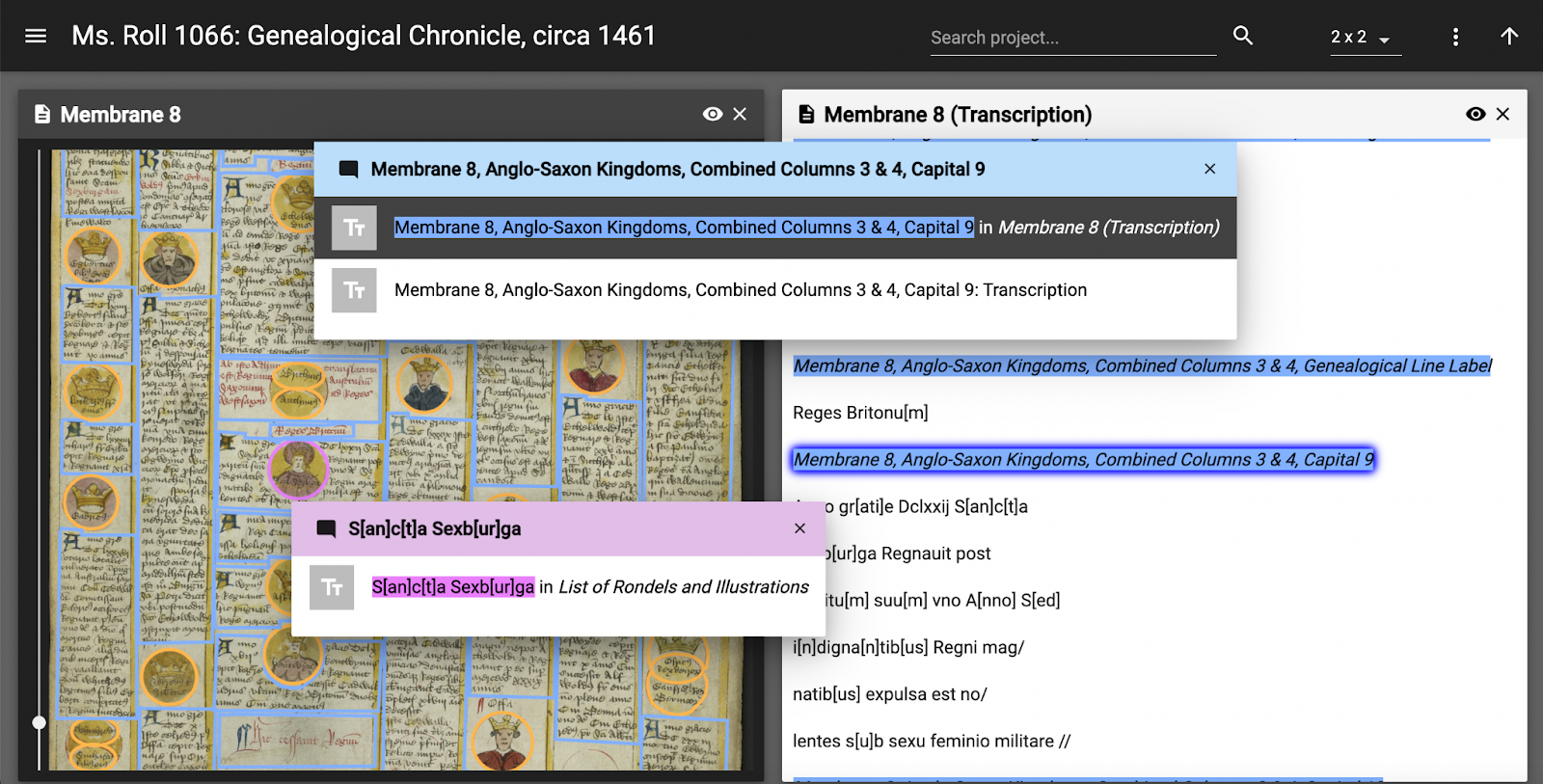MS Roll 1066 is one of a cluster of four genealogical chronicle rolls known as the Temporum group, after their distinctive opening phrase, Temporum summam lineamque descendentem. The other members of the group are:
Cambridge, US, Houghton Library, MS Typ 40
San Marino, US, Huntington Library, MS 264
Cambridge, GB, Trinity College, R 4.52
Other 15th-century genealogical chronicle rolls to Edward IV or Henry VI include:
Cambridge, GB, Emmanuel College, MS 231
Cambridge, GB, Parker Library, Corpus Christi College, MS 116
Cambridge, GB, Parker Library, Corpus Christi College, MS 98
Cambridge, GB, Parker Library, Corpus Christi College, MS 98A
Cambridge, GB, Trinity College, R 4.3
Chicago, US, Newberry Library, Case MS 166
Christchurch, NZ, Macmillan Brown Library, University of Canterbury, MS 1
København, DK, Kongelige Bibliotek, Ny. Kgl. 1858 fol
London, GB, British Library, Add. MS 18268 A
London, GB, British Library, Add. MS 21058
London, GB, British Library, Add. MS 24026
London, GB, British Library, Add. MS 24342
London, GB, British Library, add MS 31950
London, GB, British Library, MS Harley 7353
London, GB, British Library, Harley Roll C.9
London, GB, British Library, Harley Roll T.12
London, GB, British Library, MS Landsdowne 456
London, GB, British Library, Lansdowne Charter 2
London, GB, British Library, MS Royal 14 B VIII
London, GB, British Library, Stowe MS 72
London, GB, British Library, Stowe MS 73
London, GB, College of Arms, MS 20/06
London, GB, College of Arms, MS 20/20
London, GB, College of Arms, MS Arundel 23
London, GB, Lambeth Palace, MS 1170
London, GB, Society of Antiquaries of London, MS 501
London, GB, University College, MS Angl. 3
Manchester, GB, John Rylands University Library, Latin MS 113
Manchester, GB, John Rylands University Library, MS 146
New Haven, US, Beinecke Library, Yale University, Marston MS 242
New York, US, Pierpont Morgan Library, MS B.30
Oxford, GB, All Souls College Library, MS 40
Oxford, GB, Bodleian Library, MS e Mus 42
Oxford, GB, Bodleian Library, Lyell 33
Oxford, GB, Bodleian Library, MS Ash. Rolls 21
Oxford, GB, Bodleian Library, MS Ash. Rolls 26
Oxford, GB, Bodleian Library, MS Bodl. Rolls 5
Oxford, GB, Bodleian Library, MS Bodl. Rolls 7
Oxford, GB, Brasenose College, MS 17
Oxford, GB, Corpus Christi College, MS 207
Oxford, GB, Magdalen College Library, Lat 248
Oxford, GB, Magdalen College Library, Peyps 244
Paris, FR, Bibliothèque nationale de France, lat. 6055
Philadelphia, US, Free Library of Philadelphia, MS Lewis E201

![Ms. Roll 1066, detail of membrane 7, side 1. Center rondels are labeled Malgo Rex (above) and Caraticus Rex per Saxones et expuls[us] (below).](/sites/default/files/migrations/images/hero/single/ms1066-hero.jpg)
